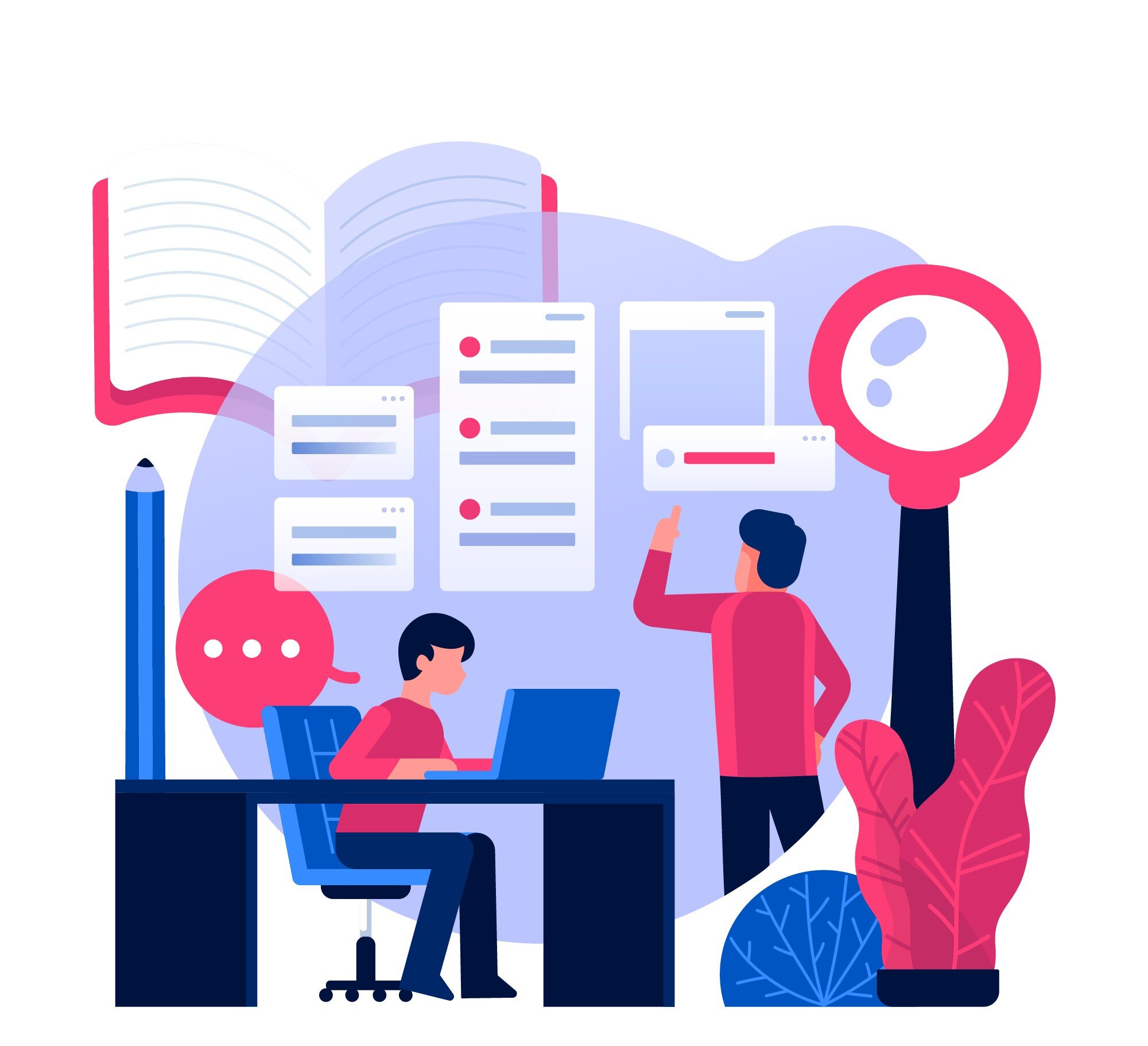Performance Reviews Meet Microlearning
In today’s competitive business world, traditional performance reviews just don’t cut it anymore. To stay ahead, organizations need smarter solutions. By pairing employee feedback systems with modern learning tools like microlearning, businesses can turn feedback into real opportunities for growth. This powerful combination doesn’t just improve individual performance, it creates a culture where continuous learning and improvement thrive, setting the stage for long-term success.
The Evolution of Performance Review Systems
Traditional performance reviews often relied on annual meetings where employees received scores or ratings. While these reviews provided a snapshot of past performance, they rarely encouraged forward-thinking development or actionable improvements.
Modern performance review systems have evolved to focus on real-time feedback and ongoing development. These systems emphasize continuous communication, collaboration, and personalized growth strategies, creating a more holistic approach to employee performance management.
The Role of Employee Feedback Systems
Employee feedback systems are designed to create a two-way dialogue between employees and managers. They provide a platform for constructive feedback, fostering a sense of engagement and accountability. Here’s how they add value:
- Encourage Continuous Improvement: Regular feedback sessions help employees make incremental improvements rather than waiting for annual reviews.
- Promote Transparency: Open discussions about performance and goals build trust between employees and managers.
- Align Employee Goals with Business Objectives: Feedback systems ensure that individual efforts contribute to the organization’s larger goals
Integrating Microlearning with Performance Systems
Feedback alone isn't enough to drive growth—it must be paired with actionable learning opportunities. This is where microlearning comes into play.
Microlearning delivers targeted, bite-sized lessons that employees can use to address specific skills or knowledge gaps identified during feedback sessions. When managers provide feedback during performance reviews, the system can automatically recommend relevant microlearning modules.
This integration creates a continuous development cycle that accelerates employee growth. Employees complete these lessons quickly while feedback is fresh, leading to faster skill development and better retention.
Benefits of Real-Time Feedback and Training
Personalized Development: Tailor learning paths based on feedback, ensuring employees work on relevant skills. Each employee receives customized microlearning recommendations based on their specific performance review outcomes.
Improved Engagement: Short, focused lessons are more engaging than lengthy training sessions, leading to higher completion rates. Microlearning modules typically take 3-10 minutes to complete, fitting seamlessly into daily workflows.
Flexible Learning: Employees can access lessons anytime, fitting development into their schedules. Mobile-accessible microlearning allows learning to happen anywhere, whether at the office or remotely.
Measurable Outcomes: Microlearning modules often include quizzes or practical applications, making it easy to track progress. Performance improvements can be measured in subsequent reviews, creating a clear feedback loop.
For instance, if an employee needs to enhance their leadership skills, they could complete microlearning lessons on delegation, conflict resolution, or strategic thinking—areas highlighted during their review.
Discover how microlearning is enhancing soft skills development in today’s workplace.
Implementing Continuous Learning Cycles
- Incorporate Feedback into Learning Paths
Use insights from reviews to recommend specific microlearning modules. For example, a lack of proficiency in data analysis could be addressed with a series of lessons on spreadsheet tools or analytics frameworks. - Leverage Technology
Integrate performance management software with a learning management system (LMS) that incorporates microlearning in order to bridge the gap between reviews and action. This allows employees to access recommended lessons directly from their review platform. - Set SMART Goals
Combine feedback with microlearning to help employees set Specific, Measurable, Achievable, Relevant, and Time-bound goals. Progress can then be tracked and reviewed regularly. - Promote Peer Learning
Encourage team members to share insights and lessons learned through feedback and training. This fosters collaboration and reinforces the learning culture.
Best Practices for Performance-Driven Microlearning
Building a growth-oriented culture requires more than just implementing new systems. It requires a strategic approach that aligns performance reviews with continuous learning opportunities.
Boosts Engagement: Employees who see tangible growth opportunities are more likely to stay motivated. When performance reviews lead directly to accessible learning resources, employees feel supported in their development.
Enhances Retention: Offering pathways for personal and professional development reduces turnover rates. Microlearning provides these pathways in digestible, achievable formats that don't overwhelm employees.
Drives Innovation: A culture of learning encourages employees to think creatively and take initiative. Regular feedback combined with continuous microlearning creates an environment where experimentation and growth are valued.
Increases Agility: Continuous learning enables employees to adapt quickly to new challenges and roles. Microlearning's just-in-time nature ensures employees can quickly acquire skills as needs arise.
Frequently Asked Questions
How does microlearning improve performance reviews?
Microlearning improves performance reviews by providing immediate, targeted training to address skill gaps identified during evaluations. Employees can access 3-10 minute lessons on specific competencies, enabling them to act on feedback quickly rather than waiting months for formal training.
What are the benefits of combining feedback with microlearning?
Combining feedback with microlearning creates a continuous learning cycle: reviews identify gaps, microlearning addresses them immediately, and subsequent reviews measure improvement. This approach increases training completion rates significantly compared to traditional methods and accelerates employee development.
How often should performance reviews include microlearning?
Modern performance systems integrate microlearning continuously, not just during annual reviews. Implement quarterly check-ins with personalized microlearning recommendations, or use ongoing feedback tools that suggest relevant lessons in real-time as performance gaps emerge.
Ready to revolutionize your performance review systems?
With 5mins.ai, you can integrate microlearning into your employee feedback process seamlessly. Gain access to the market's largest library, featuring over 20,000 bite-sized lessons, to address the impact of performance review systems and microlearning on employee success.
Get a free demo by clicking on the button below!
.png)



